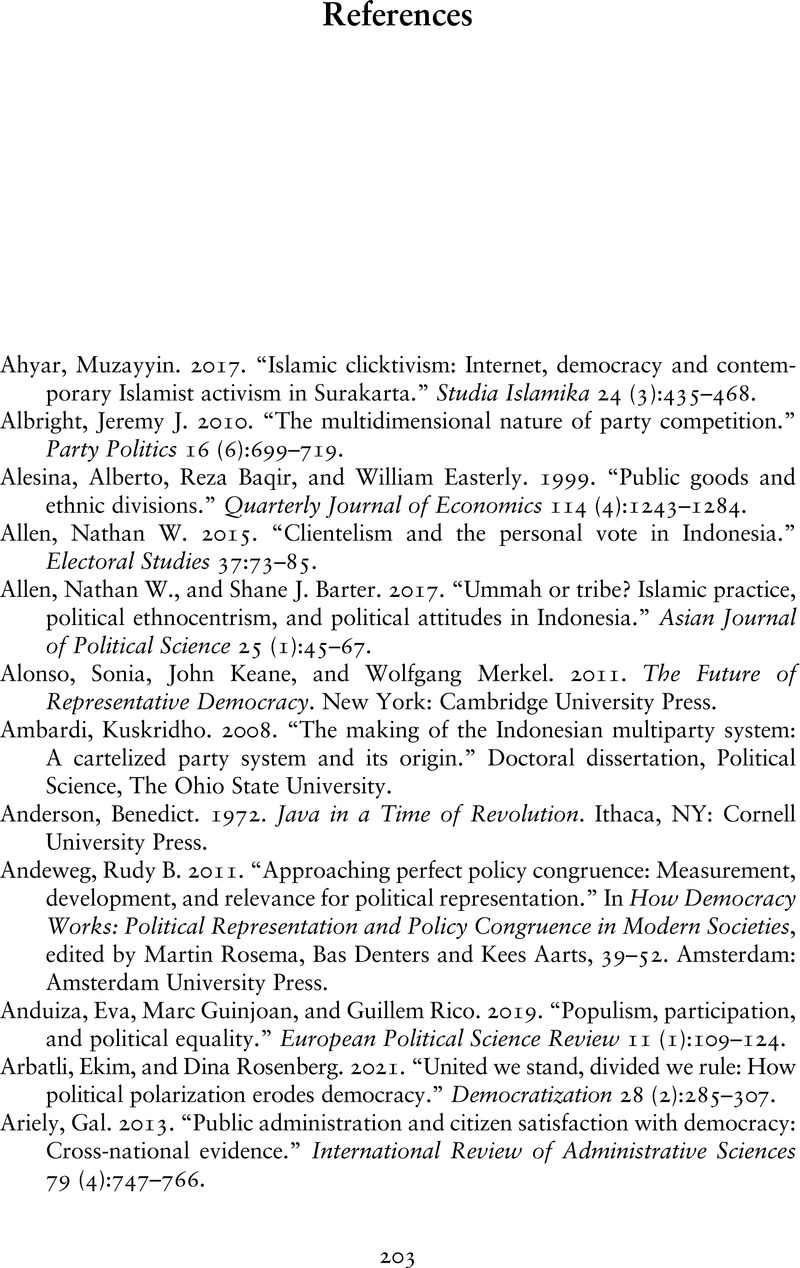Book contents
- Unity through Division
- Unity through Division
- Copyright page
- Dedication
- Contents
- Figures
- Tables
- Acknowledgments
- 1 Introduction
- 2 Explaining Democratic Survival in Indonesia
- 3 The Ideological Roots of Electoral Politics
- 4 Political Elites and Ideological Competition
- 5 Public Opinion on Political Islam
- 6 Ideological Representation
- 7 Meaning and Evaluation of Democracy
- 8 Conclusions
- References
- Index
- References
References
Published online by Cambridge University Press: 15 September 2022
- Unity through Division
- Unity through Division
- Copyright page
- Dedication
- Contents
- Figures
- Tables
- Acknowledgments
- 1 Introduction
- 2 Explaining Democratic Survival in Indonesia
- 3 The Ideological Roots of Electoral Politics
- 4 Political Elites and Ideological Competition
- 5 Public Opinion on Political Islam
- 6 Ideological Representation
- 7 Meaning and Evaluation of Democracy
- 8 Conclusions
- References
- Index
- References
Summary

- Type
- Chapter
- Information
- Unity through DivisionPolitical Islam, Representation and Democracy in Indonesia, pp. 203 - 218Publisher: Cambridge University PressPrint publication year: 2022

